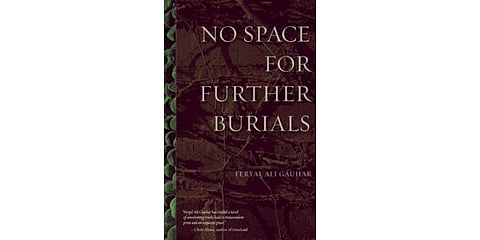Afghanistan anodyne
Feryal Ali Gauhar's new novel is an unmitigated tale of horror – bestial fact stacked upon bestial fact, evoking revulsion and nausea. The book's jacket claims that the work powerfully reveals the tragedy of Afghanistan, the terrible madness of war. But No Space for Further Burials never reaches that broader bank, staying caught instead in the narrow sewer it describes.
Although the book's publisher gives only sketchy details about the author, Gauhar is well-known enough in her multiple roles as a UN goodwill ambassador, a TV actress, and as the author of the 2002 The Scent of Wet Earth in August, which explored Tibbi Galli (Lahore's red-light area) and the abuse of women. In No Space for Further Burials, she moves away from both Pakistan and gender issues, instead basing her novel in post-Taliban Afghanistan.

